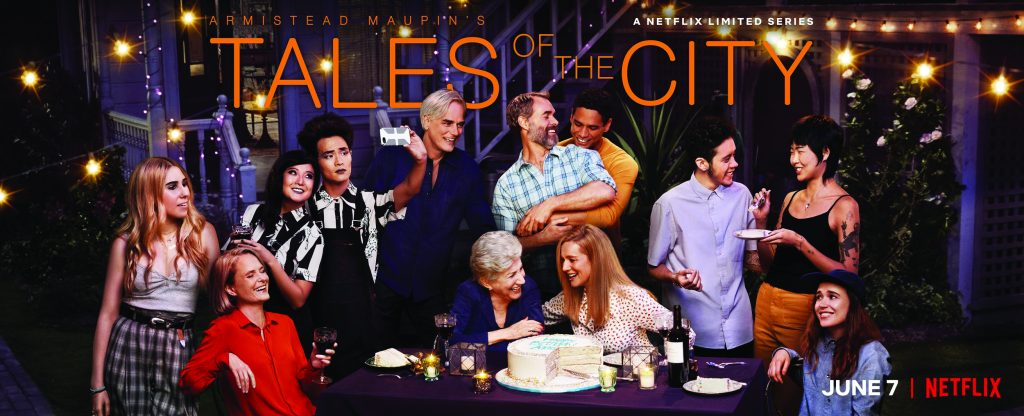~ by joel martens ~
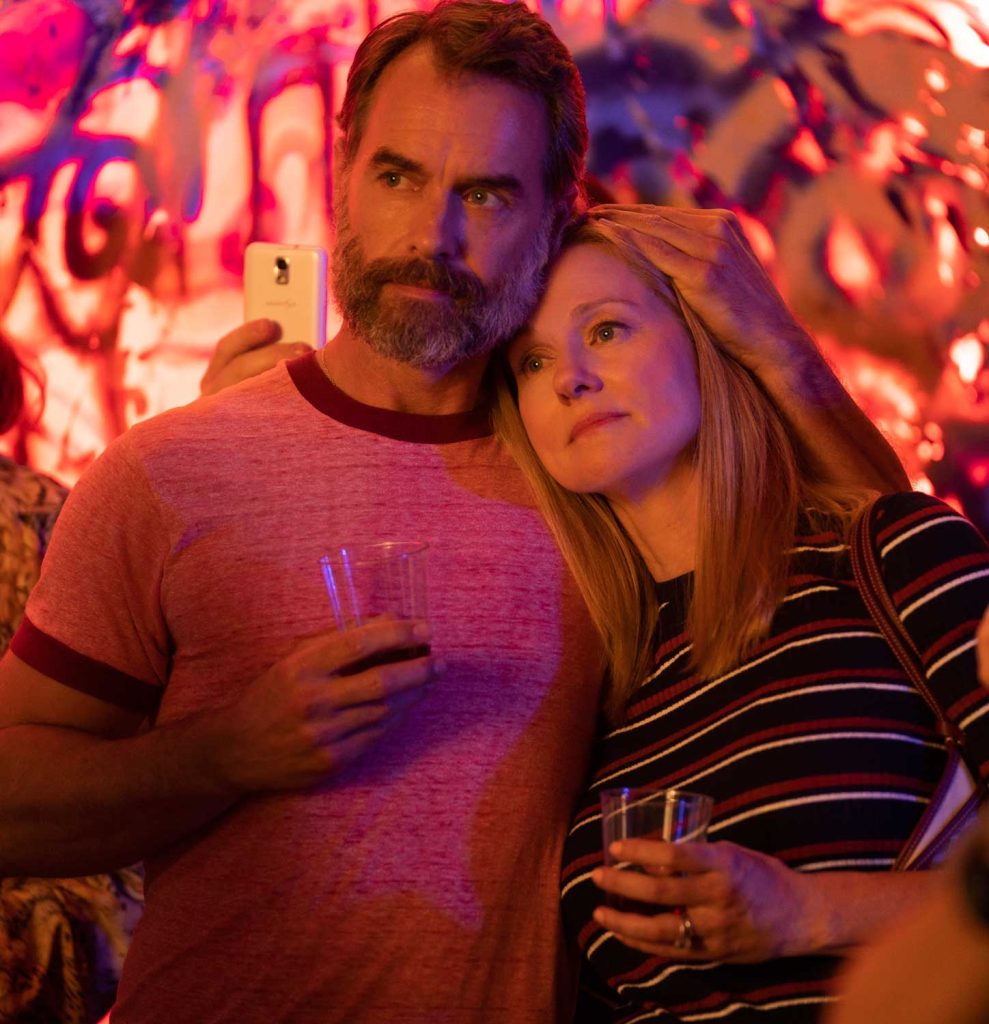
Murray Bartlett went to acting school in Australia and successfully worked there for a number of years, though he felt restless. The industry there is small, so there’s not many opportunities and a lot of actors who want to work. In his 20’s Bartlett, like many of us, was asking the big questions in life at the time: Who am I? What do I want to do with my life? Where do I want to do it? Part of that search took him to New Zealand for a several-week-long wilderness walk and during that quest, he had the inspiration to come to New York. To, as he said, “Be in the opposite space, to be in a very stimulating place.”
Next stop: New York City.
For four months Bartlett did acting classes and then decided to extend his visa because he fell in love with the pulse of the city. Like it often goes, at the end of nine or ten months Bartlett met a guy, who was friends with a woman, who was best friends with the producers of Sex in the City. Fortuitously, they’d been searching for a non-American and he got called in for an audition.
A few days later an audition with Sarah Jessica Parker followed and he was cast for the role. An agent came as a result of that and though it was a number of years before he was able to procure the right papers to work freely, the rest has simply fallen in to place. Not a bad thing for someone who initially wasn’t going to move here permanently. “I just came here to get inspired and then I really fell in love in New York and saw a possibility to stay, so I ran with it.”
The following is, as they say, “The rest of the story…”
You’ve been on some of my favorite shows. Sex in the City and White Collar, which was such a unique one-of-a-kind show, the great series Damages with Glenn Close and Looking. Tell me a little bit about what the differences and similarities were for you working on those shows as compared to Tales of the City.
What’s wonderful about doing something like Tales of the City, and being a regular in a show like Looking is it’s like doing an extended play in a way. Like the characters, you have people who you get to form relationships with and it’s this wonderful sort of family. As fun and exciting as it can be to do an episode or two on this or that show, you’re the new kid at school so you’re always kind of the outsider. Sometimes you completely fall in and people are very gracious and friendly, but they’ve also got their sort of rhythm as friends. There are some interesting differences between doing episodic stuff and having a long run on something, you really settle into it and form great relationships. Looking was one of those magical experiences where it was a long-lasting kind of connections that were made.
Though Tales of the City and Looking are very different, there are many similarities in that it’s all gay subject matter and a gay-themed storyline. I would imagine those relationships are fairly unique as compared to doing another series or another show. Is that the case?
The lens of Looking was much smaller. It focused on a few characters and it was largely about gay men. Whereas in Tales of the City the focus had a much broader lens, so it’s a bigger family. Looking was a half hour and you have to be careful about taking on too much, so I think it was smart to just focus on those few characters because you can only cover so much in terms of story and character.
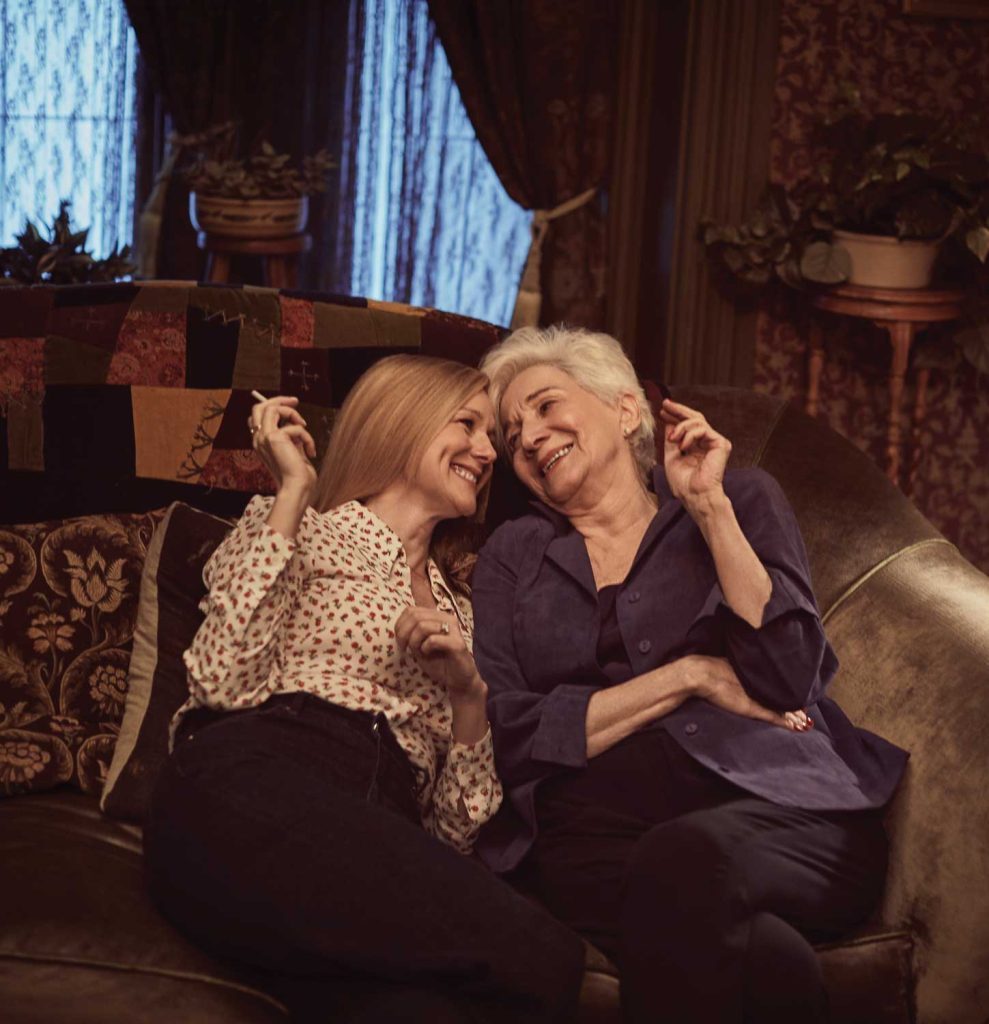
Mouse [Michael Tolliver in Tales] is a little older than Dom was in Looking, and even though Mouse has much more of a boyish spirit then Dom had, he’s a lot more mature in that he’s walked through fire, faced death and has seen a lot of his friends die and Dom hasn’t. In the beginning of Looking, he was like, “Why am I leading such a superficial life? I’m looking for more depth in my life.” I think that was the biggest difference, for me.
Interestingly, too, San Francisco as a city has changed a lot between the time of Tales of the City and Looking. It’s changing so rapidly, even in those few years San Francisco has evolved into quite a different place.
So true. It’s been fascinating to visit San Francisco in the new Tales of the City and in turn, reconnect with the old one. I was a little weepy the whole time and feeling nostalgic because I spent a great deal of time in San Francisco from like’95 to 2008. Like you said, it’s such a different world now. I’m curious to know how familiar you were with Tales of the City and San Francisco before connecting with the current show?
I feel the same way, but you’ve got to roll with it I guess. There were some really beautiful things about San Francisco then that don’t feel as present anymore. I went in the mid-’90s first and I was there recently and yeah, I missed some of the original spirit of it. You were kind of enveloped in this beautiful sense of family and community and a kind of freedom of expression. It was a real revelation and had such a beautiful impact on me. It is very different now and so expensive. A lot of those people who were really expressing themselves, tend to be artists who typically don’t have a lot of money and just can’t afford to live there anymore. Hopefully, it’ll find some balance.
It’s an interesting commentary on community and the way the LGBTQ world has evolved. We fought so hard to become a part of mainstream society and because we did it so well, we are more gentrified and less ghettoized. In some ways that has dissipated the sense of community, we’re not outliers anymore… We’re insiders.
That’s one of the things about the show that was really, really arresting for me. There are so many markers that were a part of this original series, that sort of sweet innocence of the sexual revolution and coming into our community that was all pre-AIDs, which I think is a really significant part of what that experience was like. There are such wonderful things about discovering a community of like human beings, respecting each other and loving each other and living together.
You’re right, I think there are some really beautiful things about some of the specifics of LGBTQ history, that along with a sort of greater sense of being part of a larger community, we can still honor and value and cherish. We can definitely afford to do that.
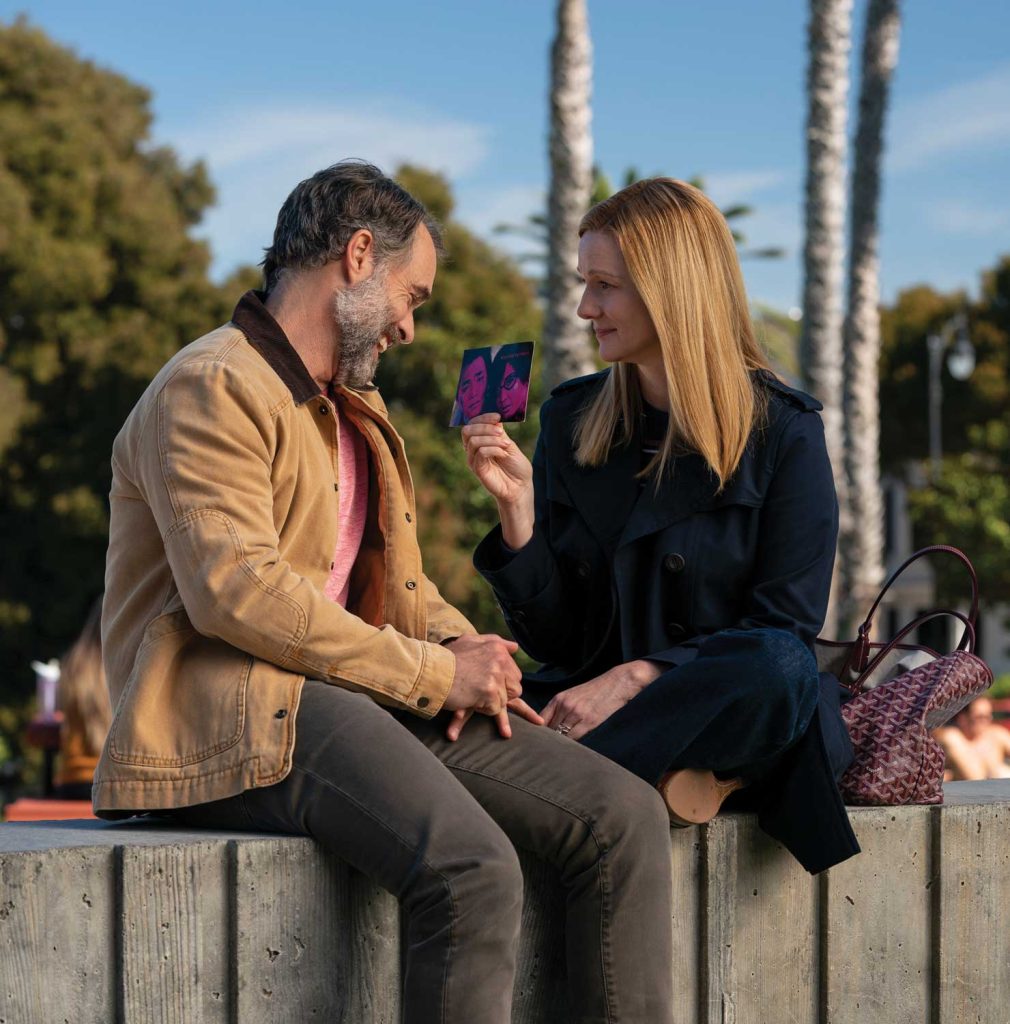
I think that’s the great task of media, we’re at a point now where we can really do that. We can view through the lens of history. Then examine how the process occurred, what has happened, what we’ve gained and what we’ve lost.
Yes, we have a lot more choices. Like for instance in terms of relationships, with marriage equality. There are wonderful things about having traditional relationship models, but as a gay person growing up in the ‘80s and ‘90s we weren’t confined by any of those traditional roles. There’s a freedom that came with that and I think it would be sad if we lost some of those perspectives. Particularly moving forwards in looking at gender and sexual identity, and how you can be anywhere on that spectrum.
Now, we all have the potential to explore that. The fact that we’re not part of ‘regular’ society and don’t conform to all those norms, brings us this kind of openness. The ability to really kind of examine those gender roles and identities that are forced upon us and then hopefully, break through them in the way that we have always been able to because we’ve already had to navigate through and find our own way.
That’s the great gift of being outside the norm, you get to explore. Something that’s handled really, really well with Ellen Page’s character, and the trans character, Jake. I was really glad he was included in the current storyline. Tell us a little about what it was it like for you to step into the role of Michael. Was it intimidating at all for you?
I did have moments, as you always do when you’re going into something new because you want to bring your best and be good. But really, the overwhelming feeling was joy, like, “Oh my God, I get to be part of this world and get to play this character I’ve loved for so long!” One of the reasons I love the books and the show is that it’s so infused by Armistead [Maupin]. All this beautiful, compassionate, loving, very well observed, human kind of perspective on community, family and these characters. I was so excited to be part of that world.
I went back and tried to get the essence of truth from his books, straight from Armistead. A couple of decades have gone by since we’ve seen Mouse in a TV iteration, so I feel like a lot has happened in between that has formed him into a slightly different character. He’s still got the same kind of spirit and essentially he’s still the same character, but he’s bringing with him a whole kind of breadth of experience, which has been transformative and has really kind of informed to who he is now.
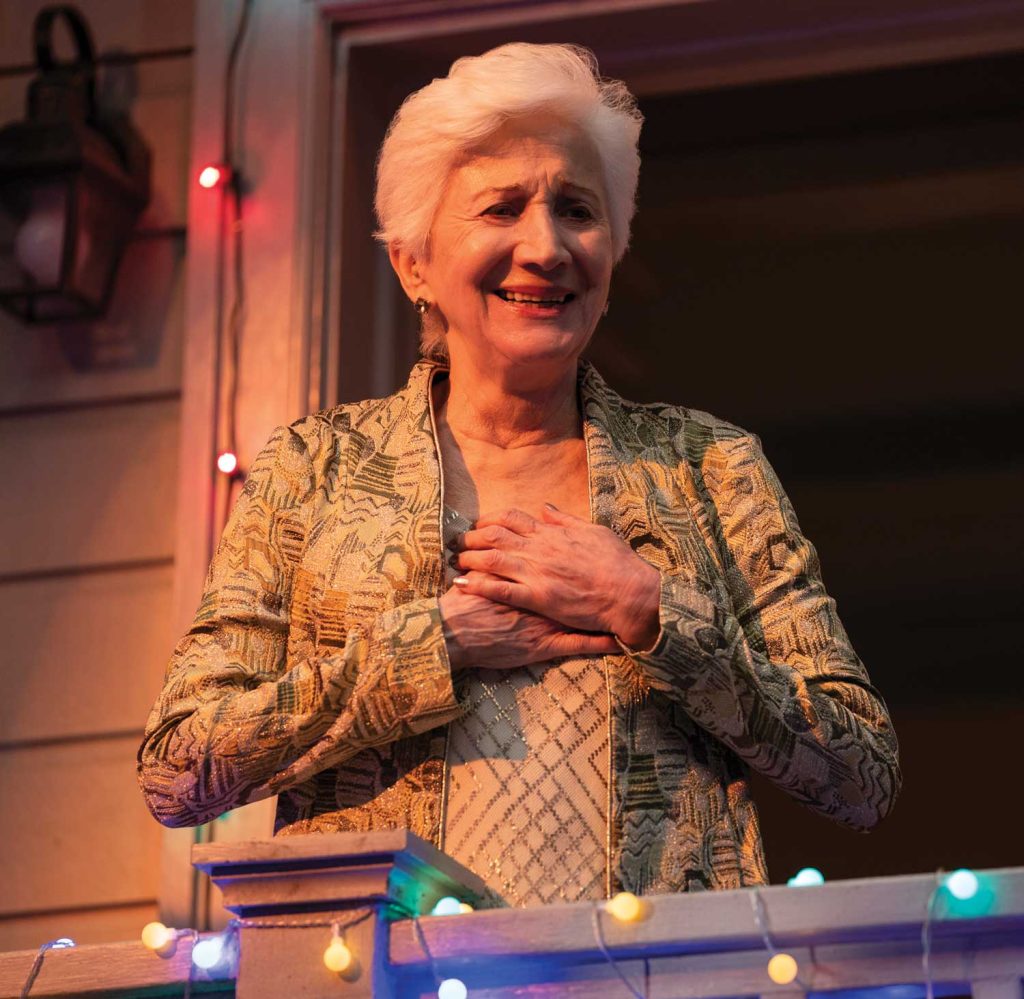
Did you get to spend much time with Armistead Maupin? In so many ways he really is the great LGBTQ storyteller for our generation.
I’d met him a few times when I worked on Looking in San Francisco and he became kind of our godfather. We shot mostly in New York, but he came to set a few times and it was always kind of special. He’s sort of morphed into this wonderful grandfatherly figure for the gay community in so many ways. Especially in the way he talks about history… the place he comes from really is very inspiring.
In the sort of pantheon of storytellers, and not just LGBTQ storytellers, he’s extraordinary. It’s easy to gloss over that because his books are so joyful and easy to read, sometimes the depths and complexity of them don’t jump out at you as much. He not only creates a beautiful world, he creates a kind of complicated, sort of very real human world and it makes you want to be better. It inspires you to be more compassionate, be more loving and be more accepting and I think that’s phenomenal.
I was recently discussing storytelling in the LGBTQ community and how it’s not as common, or there isn’t a continuum because we lost a whole generation of people who impart those stories. It’s heartening and inspiring to see it come around again.
I agree that it’s an exciting thing. This show links an older and a younger generation, bringing the original characters back and then introducing these new characters. They have different agendas and different perspectives, that’s very exciting. I recently met up with Jacob Tobia who wrote a book called Sissy. We met working with Michael Lana on a project and it was so exciting for me because there’s this sense of navigating through gender and living it fully expressed in a world that doesn’t quite know what to do with that.
Just seeing the kind of progress, personified in Jacob, was so exciting to me. The idea too that maybe I should reexamine my own way I see my gender. Seeing this wave of people like Jacob challenging gender in such a wonderful way, hopefully that’s where we’re all heading.
It’s one of my favorite things about my job, being able to talk to people from across the spectrum of the LGBTQ community. In the end, I am hopeful about where we’re headed even though we’re kind of in a slump right now. Attitudes are so different now because there’s been so much LGBTQ exposure. Though we still have a lot of work do, it really is transformed.
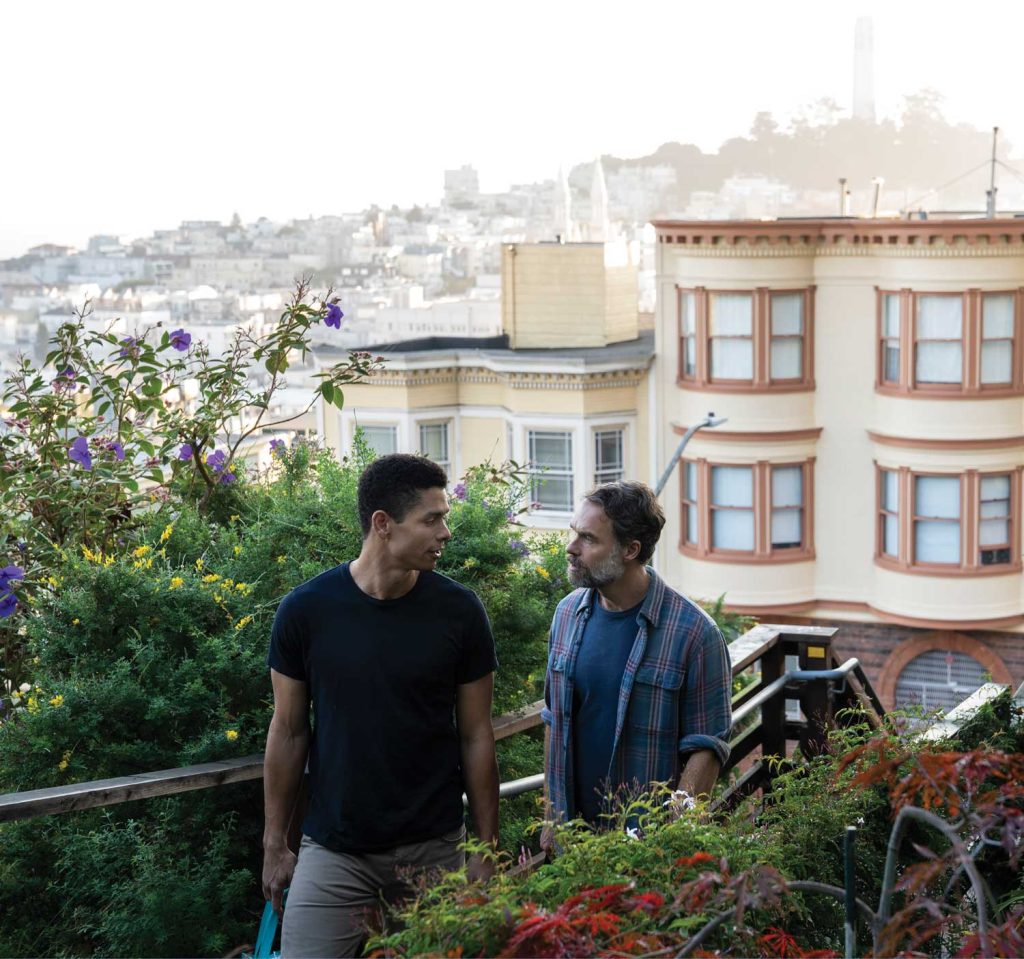
Yes. I think that we have to see this bump as challenge, a real kind of fire under us to not be complacent. Because there has been progress it would be easy to be unworried. There is still a long way to go, and not just for the LGBTQ community. The whole straight, cisgender community can afford to take a look at gender and what boxes we have let ourselves be put into. Is that what we want? Then, how can we break free of some of those things?
I think that’s exciting for everyone, not just the LGBTQ community, but all of us.
Tales of the City streams on Netflix starting Friday, June 7. Come and meet for the first time or come reacquaint yourself with Mrs. Madrigal, Mary Ann, Michael and the gang. It’s like a hug from a treasured old friend, one you haven’t seen in a long time and didn’t know you missed… It is so worth the time.
